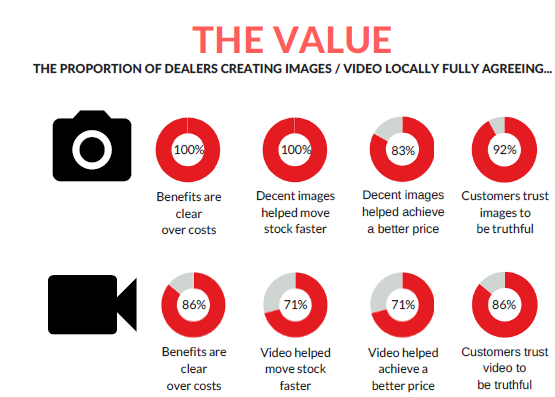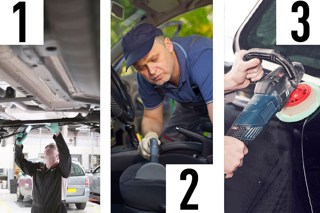In the industry we all know that 80% of car buyers research their purchases online and as a result how important it is to have a decent digital presence.
But what do buyers think of the visual material they find of dealership stock? Most importantly perhaps, do they trust it to be accurate?
We just asked 100 buyers across the UK but before I go into the results, I will first describe the assumptions about buyer experiences that we encountered among UK dealerships.
What lessons can we learn about any discrepancies between dealership and buyer opinions?
The dealer view
We surveyed dealership representatives as part of our ‘Imaging and Video Strategies’ report (pdf).
Two thirds said that images plus video are better than images alone.
92% of dealerships believed customers trusted the images that they saw and 86% believed that customers trusted the video that they saw.
A majority of dealerships (57%) believed video was more for buyers who knew what they wanted already.
The buyer's view
In terms of buyers who have researched a car purchase online in the UK recently, two thirds also say that images plus video are better than images alone.
Only 29% of buyers fully agree that dealership images of cars on sale truthfully represent the vehicles, whilst 40% say the same about video.
Finally, twice as many buyers believe video is more useful at the final stage than from the first stages of research (43% vs 19%, with the rest undecided).
Dealers v buyers
So what do any discrepancies tell us?
Dealerships are in tune with buyers’ belief in video’s benefits as a complement to images.
Indeed, our research revealed that from a proportion of 35% offering video today, the number of dealerships intending to offer video soon means the total will jump to 76%, in line with the total who will offer images (85%).
However, fewer buyers fully trust what they see than the dealerships believe, with video being regarded as more trustworthy.
That means dealerships have work to do to improve perceptions of visual media trustworthiness.

Best practise
One option is more images of each car: The most common buyer complaint was that too few images were available (50% made this complaint).
In our experience 10-15 is the ideal number of walk-around images.
Further, for 25% image quality was the top problem.
Angles and lighting are just two of the factors to get right.
Finally, buyers seem to be even more convinced than dealers that video is more useful at the final stage than from the first stages of research.
Either way, a majority of recent buyers finds it useful at some stage, with the rest perhaps not used to the experience enough yet to have a view.
Overall, dealerships seem to have a good handle on buyer preferences and are ramping up their video provision in particular to meet expectations.
There remains somewhat of a gulf in trustworthiness which some straightforward steps by dealerships could help address.
However, by watching online behaviour and listening constantly, dealerships will surely rise to this digital challenge.
Author: John Hammond (pictured), managing director at Motorclean
















Login to comment
Comments
No comments have been made yet.